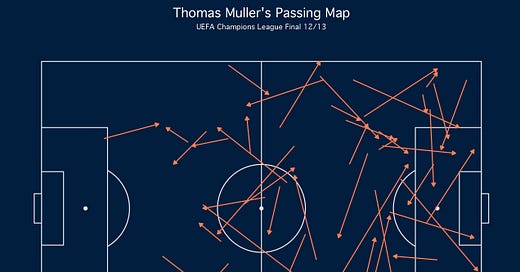Dive Into Data: Apply Football Analytics with Real-World Data using Scraping Techniques
Unlock the secrets of data in football analytics with hands-on data scraping techniques.
Diving deep into football analytics isn’t just for the pros. Whether you're a budding analyst, a fantasy league enthusiast, or just a curious fan, getting your hands on raw data and turning it into insightful analysis can be both empowering and immensely satisfying. Here’s a basic guide to help you source and analyze football data like a pro using real-world examples from top football leagues.
Data Scraping Essentials:
1. Getting Player Data from FBRef: I’ve created a Python script that efficiently collects player statistics from the top 5 European leagues over the last five seasons. This tool scrapes everything from player performance metrics to in-game statistics, which are crucial for in-depth analysis.
Access the Code Here: FBRef Player Data Scraper
Adapting the Script: You can easily modify this script to gather team-level data as well, allowing for a broader analysis of tactics and team performance.
2. Visualizing Data with Whoscored: For those interested in visualizing complex match data like pass networks, I’ve documented how to extract match event data from Whoscored. This tutorial walks you through scraping pass and shot data, perfect for creating detailed visual representations of a game.
Explore the Tutorial: Whoscored Data Visualization
Making It Work:
Tools You’ll Need: Familiarity with Python and libraries like BeautifulSoup for scraping, Pandas for data manipulation, and Matplotlib or Seaborn for data visualization will greatly enhance your capability to handle and interpret data.
Learning and Support: If you’re new to coding or data analysis, consider starting with Python tutorials and gradually work your way up to these more complex scraping tasks. Communities like Stack Overflow are invaluable for troubleshooting and also use ChatGPT wisely.
Why This Matters: Understanding how to collect and analyze your own data not only gives you insights into the game but also puts you in control of the narratives you choose to explore. It’s about becoming an active participant in the analytics community, contributing your unique perspectives based on solid data.
Conclusion: With these tools and techniques at your disposal, you're well on your way to unlocking new levels of understanding in football analytics. Whether you're assessing player effectiveness, team strategies, or game dynamics, the data is now at your fingertips.
Call to Action: Don’t just watch football—decode it. Use these scripts to start your data journey, engage with the community, and share your discoveries. Who knows what new insights you might uncover?
Enjoy the content, and see you on the dugout.



